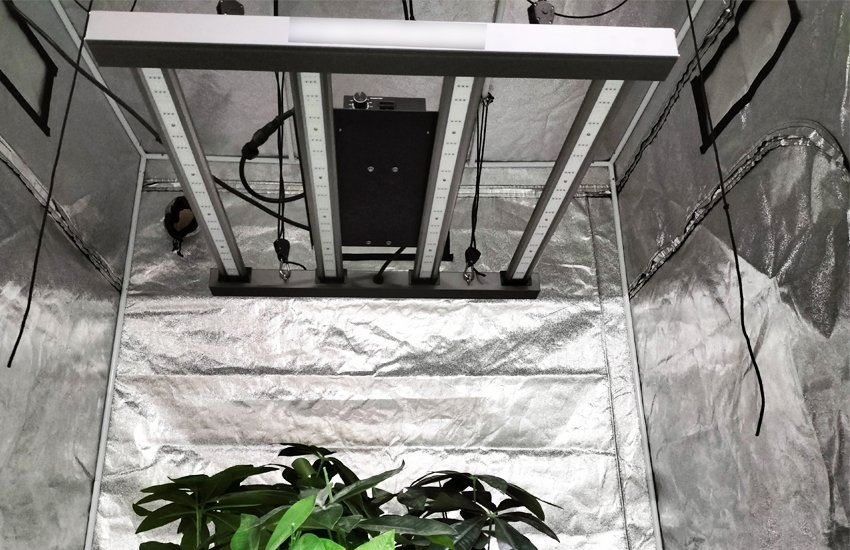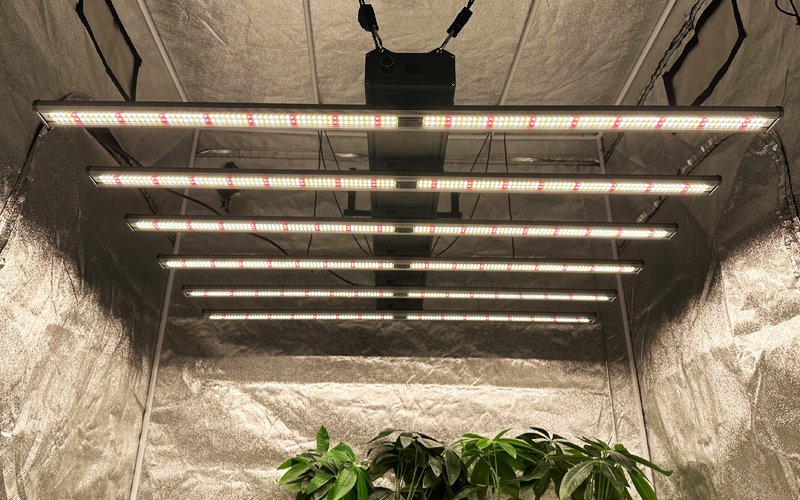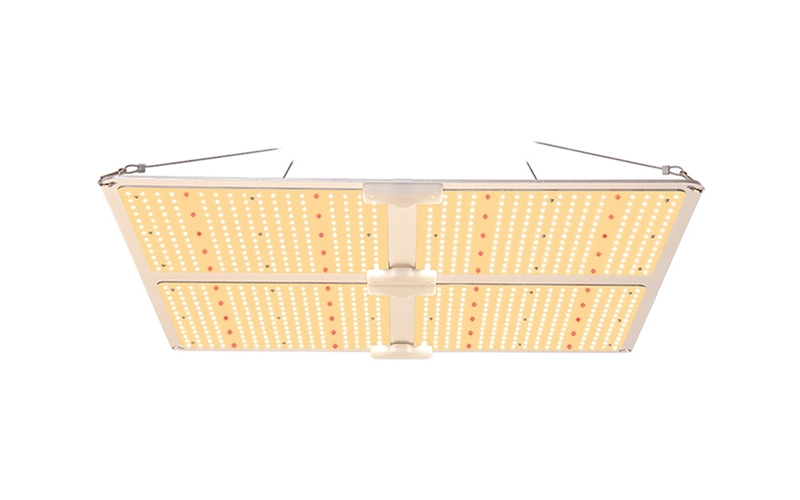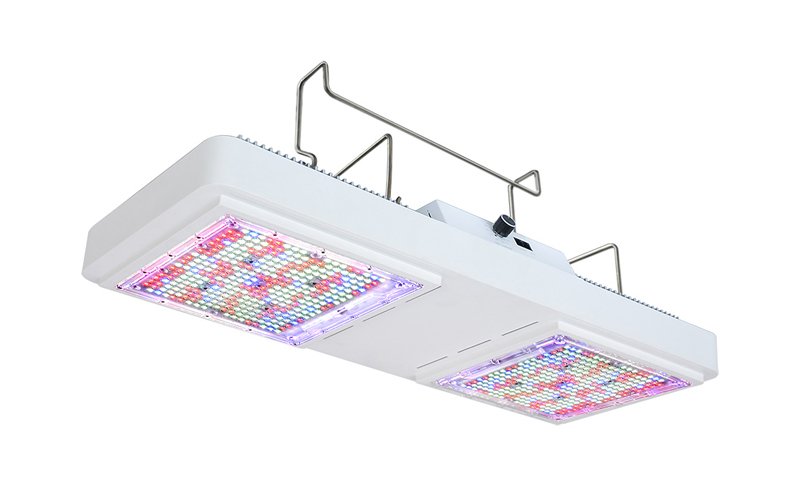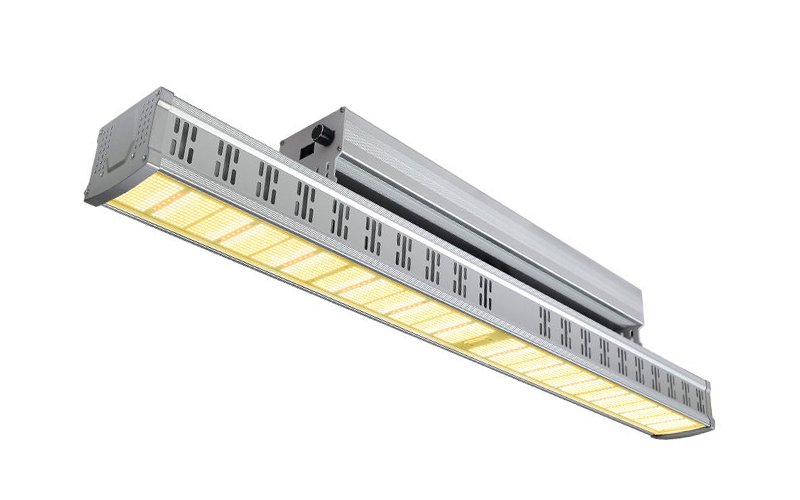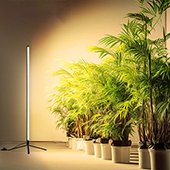Menu
How to Choose LED Grow Lights for Cannabis?
With cannabis becoming increasingly legalized and accepted for medical, industrial, and even recreational use in many regions, indoor cannabis cultivation has become a more common phenomenon.
Whether it’s small-scale experiments in home grow tents or commercial-grade large greenhouse facilities, people are carefully tending to their green endeavors.
Growers know that in this green revolution, LED grow lights play an indispensable role. However, choosing the right LED lights for cannabis cultivation is not as simple as picking out a lighting tool.
This directly affects whether your cannabis plants can grow healthily, whether the yield is satisfactory, and whether the final product quality meets standards.
Different types and configurations of lighting fixtures can affect the efficiency of photosynthesis in plants, the length of the growth cycle, and even the accumulation levels of active compounds such as THC (tetrahydrocannabinol).
Choosing the right LED grow lights for cannabis is the first step to successful cultivation and an important strategy for improving economic benefits.
Table of Contents
Cannabis Growth Cycle and Its Light Requirements
Let’s start by understanding that the cannabis growth cycle consists of several different stages, each requiring specific light requirements to optimize growth and yield. Let’s take a look at the growth cycle and light requirements of these three common cannabis varieties: Indica, Sativa, and Ruderalis.
- Seedling Stage
Duration: 1-3 weeks
Light Requirement: Seedlings require relatively low-intensity light, preferably in the blue spectrum (400-500 nm), to encourage sturdy and compact growth. A light intensity of around 400-600 µmol/m²/s is sufficient.
Recommended Light Schedule: 18-24 hours of light per day
- Vegetative Growth Stage
Duration: 4-8 weeks
Light Requirement: During this phase, plants require higher-intensity light, preferably in the blue spectrum (400-500 nm) and some green spectrum (500-600 nm), to promote robust leaf and stem development. Light intensity should be increased to around 600-800 µmol/m²/s.
Recommended Light Schedule: 18-24 hours of light per day for indoor cultivation, or natural sunlight for outdoor cultivation.
- Pre-Flowering/Nutrient Growth Stage
Duration: 1-2 weeks
Light Requirement: As plants prepare for flowering, they benefit from a balanced spectrum of light, including blue, red, and some far-red light (600-700 nm), to support healthy growth and prepare for the flowering phase. The light intensity can be maintained at around 600-800 µmol/m²/s.
Recommended Light Schedule: 18 hours of light per day for indoor cultivation, or natural sunlight for outdoor cultivation.
- Flowering/Budding Stage
Duration: 6-12 weeks
Light Requirement: During flowering, cannabis plants require higher-intensity light with a shift towards the red spectrum (600-700 nm), which stimulates flower formation and increases bud density. Light intensity should be maintained between 600-1000 µmol/m²/s.
Recommended Light Schedule: 12 hours of light followed by 12 hours of uninterrupted darkness per day for indoor cultivation, mimicking natural light cycles.
Now, let’s examine the light requirements for each variety:
Indica
Indica strains typically have a shorter flowering period compared to Sativa strains. They thrive under high-intensity light during the flowering stage, with a preference for red spectrum light to encourage dense bud formation.
Sativa
Sativa strains generally have a longer flowering period and tend to stretch more during the vegetative stage. They benefit from ample blue spectrum light during the early stages to support vigorous vegetative growth and a balanced spectrum during flowering for optimal bud development.
Ruderalis
Ruderalis strains are known for their autoflowering characteristics, which means they transition into the flowering stage based on age rather than light cycles. They typically require less intense light compared to Indica and Sativa strains but still benefit from a balanced spectrum throughout their growth cycle to maximize yield and potency.
How Home Growers Choose LED Grow Lights for Cannabis?
Balancing Spectrum Configuration and Cost-effectiveness
You may have heard about the importance of red and blue light for plant growth. In our small home space, choosing lights is like selecting the right nutritional meal for your cannabis babies. Red light primarily aids in photosynthesis and flowering, while blue light stimulates stem and leaf growth.
For home cultivation, you can opt for LED grow lights with a red-to-blue spectrum ratio of approximately 6:4 or 7:3. This is a more economical and practical choice, meeting the different needs of plants from seedling to flowering without causing a significant increase in your electricity bill.
For example, our bar-style LED grow light is excellent for this purpose. It’s designed with spectra suitable for different stages of cannabis growth, and it’s budget-friendly with low energy consumption, making it a boon for home growers.
Flexibly Adjusting Light Intensity and Uniformity
Want every leaf to bask in fair lighting? It’s not as simple as just placing a light. Firstly, determine the number and arrangement of light sources based on the size and height of your home growing area.
For example, if you have a small planting box by the windowsill, a medium-power cannabis LED grow light can cover it. If you have a larger shelf or a separate room, multiple lights may be needed with dispersed layouts, or use lights with adjustable angles and ranges.
Pro tip! Ensure the light source is positioned about 20-30 centimeters above the top of the plants for optimal lighting.
Don’t forget to regularly check and fine-tune the position of the lights to ensure uniform and thorough coverage, allowing your cannabis to enjoy sunlight-like even illumination.
Energy Consumption Control and Routine Maintenance
Saving energy and effort is a major goal of home cultivation. Energy-efficient LED growing cannabis lighting not only consumes much less electricity than traditional high-pressure sodium lamps but also produces less heat and has a longer lifespan.
This means that although the initial investment may be slightly higher, in the long run, you’ll find a significant reduction in your electricity bills and a decrease in the hassle of frequently replacing lights.
For maintenance, remember to regularly wipe the surface of the lights to maintain their transparency and avoid dust accumulation affecting the lighting effect. Also, avoid running the lights continuously for long periods to prevent overheating. Switch them off periodically, especially during hot summers. Adequate heat dissipation measures are essential.
Considerations for Commercial Growers When Choosing LED Grow Lights
Customized Spectrum Solutions for Large-Scale Cultivation
When upgrading from small-scale home cultivation to commercial-scale cannabis growing, spectrum configuration is no longer simply about a red-blue ratio. You need to finely tune the light source formula like crafting a sophisticated cocktail.
Based on the different characteristics of cannabis strains and their varying needs during each growth stage, you can choose professional-grade LED lights with adjustable spectra. This allows you to freely adjust the color ratio of the lighting.
For example, VantenLED’s Cannabis Grow Lights Series is such a remarkable tool. They allow you to precisely control the spectra components such as red, blue, white, and infrared according to the different stages of cannabis growth, from seedling to flowering, ensuring that each cannabis strain receives the most suitable light therapy.
Efficient Lighting Design and Precise Control
In large cultivation areas, light intensity and uniformity are crucial for ensuring crop yield. This requires the application of some hardcore agricultural engineering techniques.
Firstly, you need to analyze the lighting requirements of the entire greenhouse. Use professional calculation software to simulate the distribution of light at different positions and heights, ensuring that the overall light intensity falls within the optimal range (such as 500-1000 μmol/m²·s).
In terms of lighting fixture layout, you can utilize a multi-tiered hanging system or a grid arrangement to ensure that every cannabis plant receives sufficient and uniform lighting.
Coupled with intelligent control systems, such as environmental sensors and devices that automatically track light intensity, you can achieve 24/7 fine-tuned lighting management. This ensures that every seedling feels the warmth and precise care akin to that of the sun.
Return on Investment and Durability Assessment
For commercial growers, initial investment is important, but long-term considerations are paramount. While high-quality cannabis growing lights may have a higher initial cost, their energy-saving and efficient features significantly reduce operational costs and lead to higher crop yields and quality improvements.
When selecting lighting fixtures, it’s essential to consider their energy efficiency, lifespan, and maintenance costs.
The industrial-grade LED grow lights from VantenLED’s Greenhouse Plant Light Series are exactly the kind of product worth investing in. They not only boast an exceptionally long lifespan, capable of continuous operation for tens of thousands of hours with minimal light degradation but also incorporate advanced heat dissipation technology.
Even under prolonged high-intensity operation, they can maintain a stable working temperature, effectively preventing performance degradation due to overheating issues.
This means that your investment in these lights will continue to yield benefits for your cannabis cultivation business over an extended period, ensuring steady support for your endeavors.
Conclusion
Whether it’s a small grow tent at home or a spacious cultivation room, selecting LED lights for cannabis cultivation is like embarking on a treasure hunt. You need to find the treasure that suits your budget and is most friendly to your plants.
The key lies in understanding the importance of spectrum, light intensity, and uniformity—just like preparing a well-balanced meal for your plants, different growth stages require different combinations of ingredients.
At the same time, don’t forget to consider cost-effectiveness, as investing in lighting fixtures is for long-term returns. Therefore, lights with high durability and excellent energy efficiency are the way to go.
Home growers can focus on small to medium-sized lights that offer high cost-effectiveness and ease of operation. Meanwhile, commercial growers need to consider the bigger picture and opt for high-end lights that provide professionally customized spectrum solutions and efficient control systems. These lights will serve as super engines for boosting yield and quality.
If you are contemplating purchasing LED grow lights in bulk or considering upgrading traditional HPS lights to energy-efficient LED grow lighting systems, then don’t hesitate. Contact our professional team now, and we will be ready to provide you with the most suitable solution anytime!
Get in touch with us!
From custom light planning, to tailored quotes, and everything in between, our team of horticulture experts are always ready to assist.

